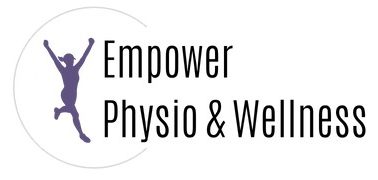In today’s post, we’re featuring Dr. Sandra Solano, MD, MS, and founder of Integro, LLC. Dr. Solano was born in Bogota, Colombia where she became a physician. Dissatisfied with conventional Western medicine, she came to Ohio to pursue post-graduate studies in Preventive Medicine and Public Health at The Ohio State University, where she later held positions as a researcher and then as Director of Clinical Quality. Dr. Solano spent several years working in public health before continuing her studies.
She became a certified master trainer for HeartMath’s Resilience Advantage™ Program and obtained sound therapy training through the ancient practice of Tibetan Singing Bowls and Holographic Memory Resolution®. Currently, Dr. Solano is the founder and executive director of Integro, LLC, an integrative health practice dedicated to helping individuals, teams and organizations respond better to the physical, emotional and mental stressors in life.
I could write pages about the science of sound. As many of you may be, I was skeptical of non-traditional healing modalities. After experiencing these modalities and personally feeling the transformation both physically and emotionally, I have dedicated many years to understanding the science behind them. In my professional practice, I have witnessed and experienced things that I cannot explain. I call that magic — what we don’t yet understand.
You may have heard of the importance of the mind-body connection. However, Dr. Pert1 proposes that we consider mind-body unity and I subscribe to this idea. Our minds and bodies are not just connected by a link. They are inseparable parts of a unity that functions in a coordinated manner to maintain optimal functioning. Her research demonstrates that the chemicals released when we experience emotions have a tangible effect on this harmonious functioning. Our emotions are imprinted in our cells as a memory and can disrupt our body’s vibrational ‘tuning.’ We can hear the difference.
Dr. James Gimzewki, a physical chemist from UCLA known for his work in nanotechnology, has recorded the sound of cells when people are healthy, stressed, or dying. The vibration of the cell changes in detectable ways2,3.
During a magical moment, I heard a healthy cell and noticed it was remarkably similar to the sounds I create with the Tibetan singing bowls. But it also reminded me of something else — the sounds of the rings around Saturn. There is magic about the harmony of nature. Harmonious colors create feelings of calm or joy. In the same way, harmonious sounds influence our emotions and our bodies in several ways.
Tibetan singing bowls create what we call resonant harmonies. Sound is a pressure wave that travels through a medium exciting the particles in front to propagate the wave. Think about a pebble in a pond and how the wave travels by moving the water particles. Resonant sounds match the native frequency of particles and excite them to vibrate at the same frequency as the sound as it passes through. When these sounds encounter our body, the atoms we are made of resonate and match that frequency. Our bodies resonate with the sounds, creating more harmony within our particles and resetting them to their original state. It’s like going back to factory settings!
Sound also influences our brains in predictable ways. Our brain functions in wave patterns measurable as electrical impulses. When awake, most of our brain is in a frequency we call a beta wave. When we focus intensively, we can experience faster waves called gamma. When we are relaxed, our brain slows down to alpha waves. When we fall asleep or meditate, we have even slower brainwaves called theta and delta. Delta waves are essential for recovery and restoration and theta waves are involved when we are learning and processing information.
Resonant sounds very quickly allow us to drop the frequency of our brainwaves into lower, more restful patterns. We don’t fully understand how these waves impact other systems however, we know that resonant rhythmic vibrations trigger chemical and hormonal releases within the brain such as endorphins, dopamine, oxytocin, and immunoglobulins4—resulting in decreased pain, relaxation, joy, and a general feeling of well-being.
Finally, sound directly impacts the nervous system via the vagus nerve stimulation and regulation of the autonomic nervous system. While research has been extensive on the mechanisms of how these translate into clinical effects5, we know that a better-regulated nervous system results in reduced inflammation, a stronger immune system, and improved emotional regulation.
While we still have much to learn about the impact of sound on our bodies, I know that letting vibration travel through your body is a magical experience that opens the door to body-mind unity.
- But the interactions that reveal: Candance B. Pert, Ph.D., Henry E. Dreher, and Michael R. Ruff, Ph.D., “The Psychosomatic Network: Foundations of Mind-Body Medicine, “ Alternative Therapies in Health and Medicine, vol 4, no.4 (July 1998):30
- https://www.youtube.com/watch?v=P3cTxdGj2zI
- https://www.youtube.com/watch?v=JW_FFY5YUCo
- https://www.incadence.org/post/the-science-behind-the-sound-music-therapy-and-our-brains
- Bartel L, Mosabbir A. Possible Mechanisms for the Effects of Sound Vibration on Human Health. Healthcare (Basel). 2021 May 18;9(5):597. doi: 10.3390/healthcare9050597. PMID: 34069792; PMCID: PMC8157227.



